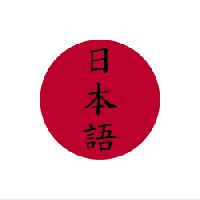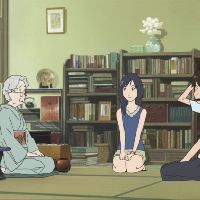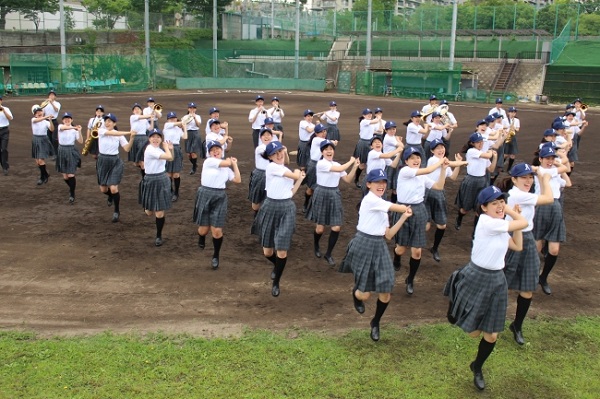
Time flies after graduating from high school. Might as well enjoy the freedom of student life while you can... as these dancing teens so obviously are!
When was the last time you saw an anime set in a school? How much time did the characters spend in class? Probably not a lot. Like any school show, if you watch a school anime you'll likely be more exposed to sports days and cultural festivals than classes. While that might not accurately represent everyday school life, the depiction of bukatsu in several anime comes a little closer to reality. [Bukatsu*], or club activities, are an enormous presence in the Japanese scholastic experience, and anime reflects it as such.
What's a Bukatsu?
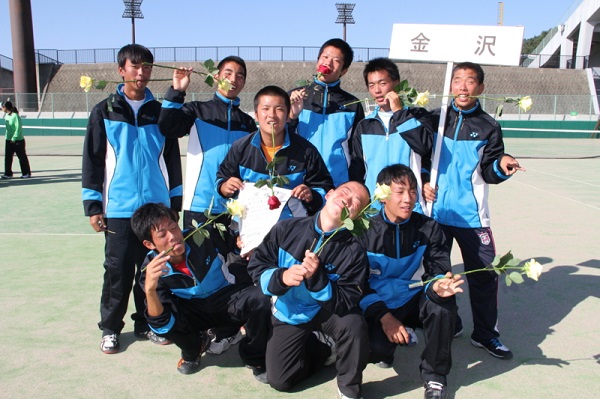
Bukatsu, or kurabu after the English "club", are present at every grade level. It's unavoidable if you're a student, and participating in at least one club is either encouraged or compulsory. Various clubs exist for every conceivable interest: there are study groups for every subject, sports teams, or bunka-kei (cultural) clubs such as music and photography.
The level of commitment required for bukatsu is notoriously rigorous. Many clubs meet from several times a week to every day, often taking up the time between school and dinner. Weekends are no more lenient, with practices or meetings taking up whole mornings. Though schools do limit official meeting time, it isn't unheard of for club leaders to set aside extra time for unofficial "community practice" or other euphemisms.
Student relationships are just as impacted by bukatsu and the groups they bring together. Club dynamics range from close bonds of friendship to teasing and ostracism for missing meetings. Students who choose not to participate in bukatsu may join an organization and simply not attend, choosing to be "ghosts". Those who avoid joining entirely are said to be part of kitakubu, or "going home early club", which may be looked down on by the student body. In addition, though teachers often lead or supervise student organizations, senior students or senpai also serve as club leaders and presidents. They provide guidance to kohai, or younger students, although this often involves having the newbies clean and work for them.
Recently, Bukatsu have come under fire, particularly from foreign families living in Japan, for its hierarchical tendencies and demands on students' free time. Yet despite the controversy, participation rates summit 60 percent, with many students citing the social and physical benefits of their regular commitment to their peers and interests. At any rate, bukatsu attendance generally falls off closer to the end of high school as students prepare for college entrance exams, and is lower in cities, where students often have more options for passing the time.
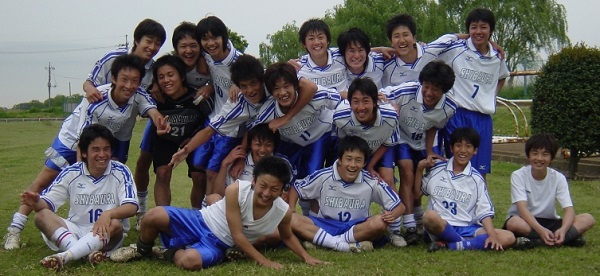
Bukatsu in Anime and Real Life
The following anime all incorporate bukatsu in some way, whether through parody or more traditional portrayals. Elements such as the senpai-kohai relationship, afterschool practice, or kitaku-bu bullying may be present yet exaggerated for comedic or artistic effect.
Haikyuu!!

Another sports series about the power of practice and determination. Haikyuu!! follows pint-sized middle schooler Shouyou Hinata as he strives to become a skilled volleyball player. At first nobody joins the volleyball club he forms, but he eventually scrapes a team together...only to get wrecked in their first tournament by a star athlete: Tobio Kageyama, the "King of the Court."
Undaunted, Shouyou joins his high school volleyball team, only to find that Tobio is now his teammate. A clash of personalities ensues between the naturally talented but arrogant Tobio and the amateurish but dedicated Shouyou. Both must learn the power of teamwork and cooperation as they set aside their differences to take the school volleyball team to glory.

Volleyball is one of the most visible and popular sports of foreign origin in Japan.
K-On!

The title comes from the Japanese word keiongaku—meaning "light music", which is essentially pop music—and that's what this show is all about. Four girls join their high school's light music club, which is in danger of disbanding now that all its members have graduated. At first the club is little more than an excuse for the girls to hang out and play music. The whole reason freshman Ritsu Tainaka resurrects it is because she gets to be club president by default. The main character, Yui Hirasawa, can't even play an instrument.
As the girls grow closer, they realize that while they're still individually developing their skills, their friendship makes them musically and personally stronger. The band works together to practice and save up for instruments, as well as helping each other study when their bukatsu time infringes on their classes. With a passionate membership and a supportive teacher leading the way, the light music club of K-On! is everything a school club should be.
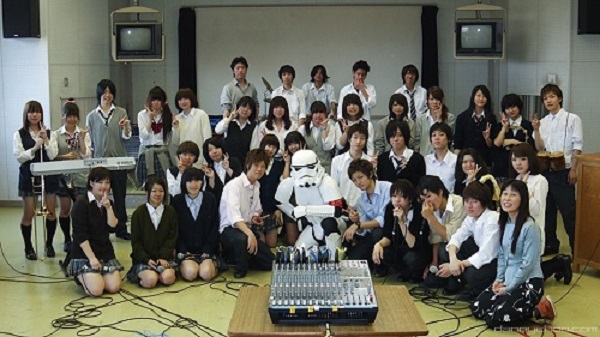
Meet the light music club of Fujisawa High!
Gakkougurashi!

Some bukatsu stay at school overnight or on weekends, or go on field trips for meets and competitions. The School Life Club of Gakkougurashi! takes this practice to its logical conclusion with its main characters, a group of four girls who live at and maintain their high school. Initially, the School Life Club appears to be a quirky community engagement organization, but it quickly becomes apparent that this is a trauma-induced fantasy: the girls are in fact the last survivors of a zombie outbreak.
The show switches between apocalyptic action and slice-of-life comedy, the latter of which comes from the perspective of disturbed main character Yuki Takeya. Yuki's relationship with her clubmates is a dark twist on the senpai-kohai dynamic: she guides the club's actions with her delusions, forcing the girls to structure reconnaissance and resupplying missions around "club outings" like trips to the mall and cleaning the school's water supply. The backbone of the bukatsu structure is inverted in Gakkougurashi!, as the events of the show revolve around keeping Yuki's skewed but stable mental state intact.
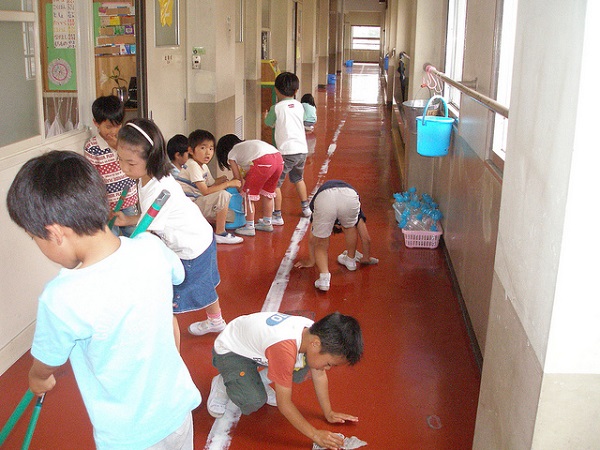
Japanese schools devote 20 minutes a day to having students clean. The School Life Club is this taken to its logical extreme, but like other school customs in Gakkougurashi!, it's a matter of survival instead of building character.
Kill la Kill
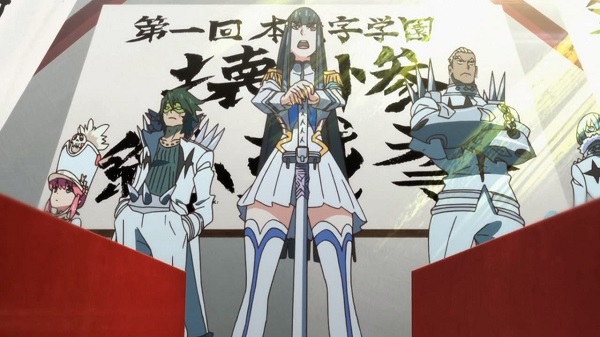
In Honnou City, one's uniform dictates their status and the Honnouji Academy student council routinely executes rule-breakers. The one surefire safety measure is to join a club, making the Academy's student organizations essentially a bizarre amalgam of prison gangs and elite military units. Each club has special uniforms and abilities based on its focus: the gardening club (split into terrace and backyard factions) commands an army of man-eating plants, for example.
Ryuuko Matoi is a stubborn kitakubu member, meaning it's open season for any club president who wishes to challenge her. Defeating the odd girl out confers automatic promotion to the Student Council, after all. It fits right in with Kill la Kill's penchant for parody. Much like joining the right fraternity or sorority at an American college, student organizations can create lasting friendships and contacts. At Honnouji Academy, joining the right club—and by extension, wearing the right uniform—is a matter of life and death.
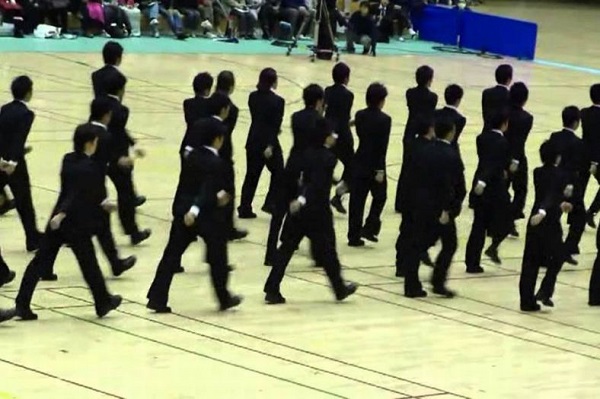
Lower-ranked students in Kill la Kill are mostly identical mooks, poking fun at the uniformity demanded of various bukatsu like this synchronized walking group.
Aa! Megami-sama!
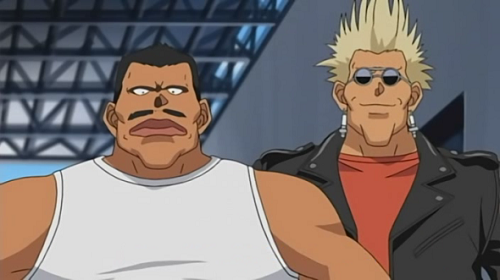
Keiichi Morisato is a member of the Auto Club at the Nekomi Institute of Technology. Like the light music club in K-On!, the Auto Club is struggling: funding and membership are down, both crippling problems for a money- and manpower-intensive hobby such as automotive maintenance. Senior members Tamiya and Otaki are constantly devising fundraisers and awareness campaigns, and most of the associated tasks fall on kohai Keiichi—along with chores and personal favors. In part, these obligations are intended to prepare Keiichi for one day taking over the club.
At one point, rival student and millionaire playboy Toshiyuki Aoshima sets up a competing auto club to drive Keiichi's out of business. Keiichi's goddess girlfriend Belldandy counters Aoshima's underhanded tactics with her magic. With these extraordinary factors canceling each other out, Aa! Megami-sama! demonstrates that the true measure of a good club is the dedication and passion of its members, rather than spiteful ambition.
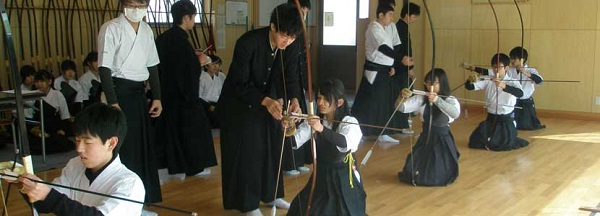
Kohai aren't just personal assistants. A senpai is expected to take an active role in his younger clubmates' education.
Kuroko no Basket
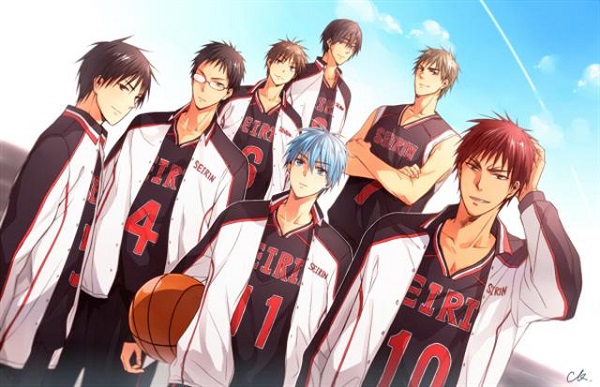
One of the most popular sports anime, Kuroko no Basket revolves around an ultra-competitive high school basketball scene. Power forward Taiga Kagami moves from the United States back to his native Japan and quickly becomes frustrated at the relatively unskilled basketball scene. On hearing about the "Generation of Miracles"—five star middle school players who graduated and went to different high schools—Taiga resolves to defeat each of them on the court.
He teams up with Tetsuya Kuroko, who is secretly the sixth member of the Generation of Miracles. Why secretly? Because he's so small and ordinary that he can make plays without being noticed. The series pokes fun at sports legends in a high school setting; as the members of the Generation of Miracles fall one by one, we also learn valuable lessons about hubris, sportsmanship, and dedication.
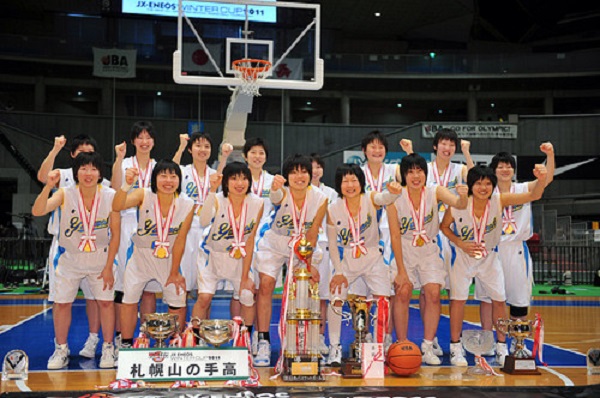
From the 42nd All Japan High School Basketball Championship. Shows like Kuroko no Basket and Slam Dunk have been officially recognized by the Japan Basketball Association for popularizing the sport in Japan.
Kitakubu Katsudo Kiroku (Chronicles of the Going Home Club)
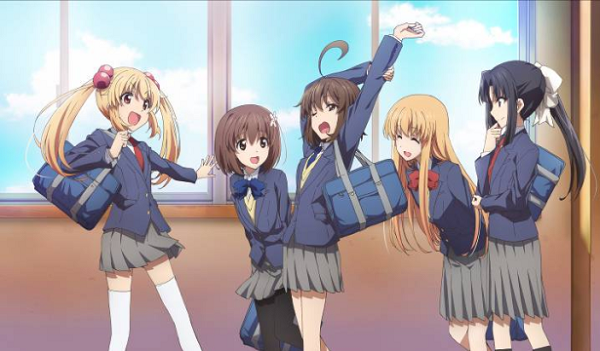
The "going home club" is a euphemism for students who choose not to take part in bukatsu. In this show, it's an actual student organization! Natsuki Andou accidentally joins the club when she declares her intent to join the kitakubu, along with four other girls. All of them are eccentric in their own way, as is perhaps the stereotype for kitakubu members. Although they don't take part in traditional school activities, this "going home club" aims to find as much joy in life as possible before going home for the day.
The girls are all lovably weird: one enjoys fighting bears, and another's most prized possession is a pair of her grandmother's scissors. Their antics riff on all sorts of anime tropes and elements of school culture along the way; the girls comment on the animation and at one point explore what the show would be like in other genres. Perhaps the kitakubu students are out of the ordinary, but Kitakubu Katsudo Kiroku shows that there's nothing wrong with pursuing the things that make you happy.
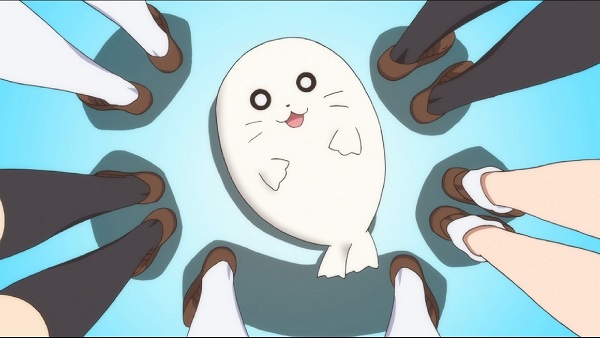
Especially if one of those things is an adorable seal.
Chihayafuru
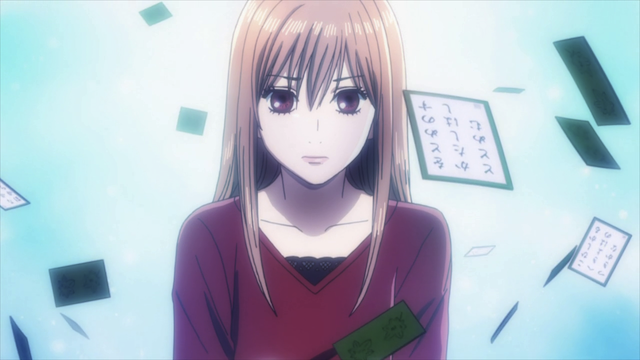
As cultural clubs go, you'd be hard-pressed to find something more cultural than competitive karuta, a sport based on matching cards with lines of traditional Japanese waka, or poetry. Chihaya Ayase is drawn to the sport early in life by her childhood friend Arata Wataya. Though they become separated as they grow up, Chihaya adopts Arata's dream of becoming a karuta "queen", or professional. Who knows? That dream might even lead her back to her friend one day.
Chihaya's passion for karuta borders on the obsessive; although her excellent hearing makes her a formidable karuta player, she can sometimes be blind to other people. With a distinctive brand of authenticity—the series creator, Yuki Suetsugu, was a competitive karuta player in high school—Chihayafuru explores the balance between ambition and happiness that serious bukatsu participants often face.
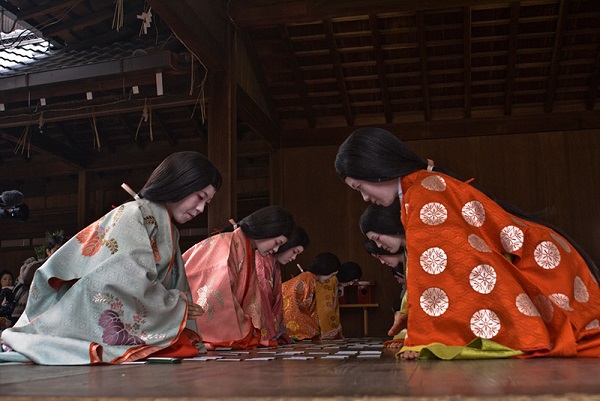
Competitive karuta dates back centuries and requires extensive memorization skills and agility—no small commitment in high school.
So What?
A well-known rule of fiction is to capture the characters at the most important moments in their lives. A popular phrase used to describe one's bukatsu experience—Ano korowa kagayaieteita!—echoes this sentiment, as it translates to "Those days shined brilliantly!" For students, bukatsu come at a transitional period, during which they are exploring their interests and learning to navigate groups outside of family and close friends. School clubs and activities are full of experiences that help form a solid foundation for young people, which makes them perfect for stories of growth and change.

